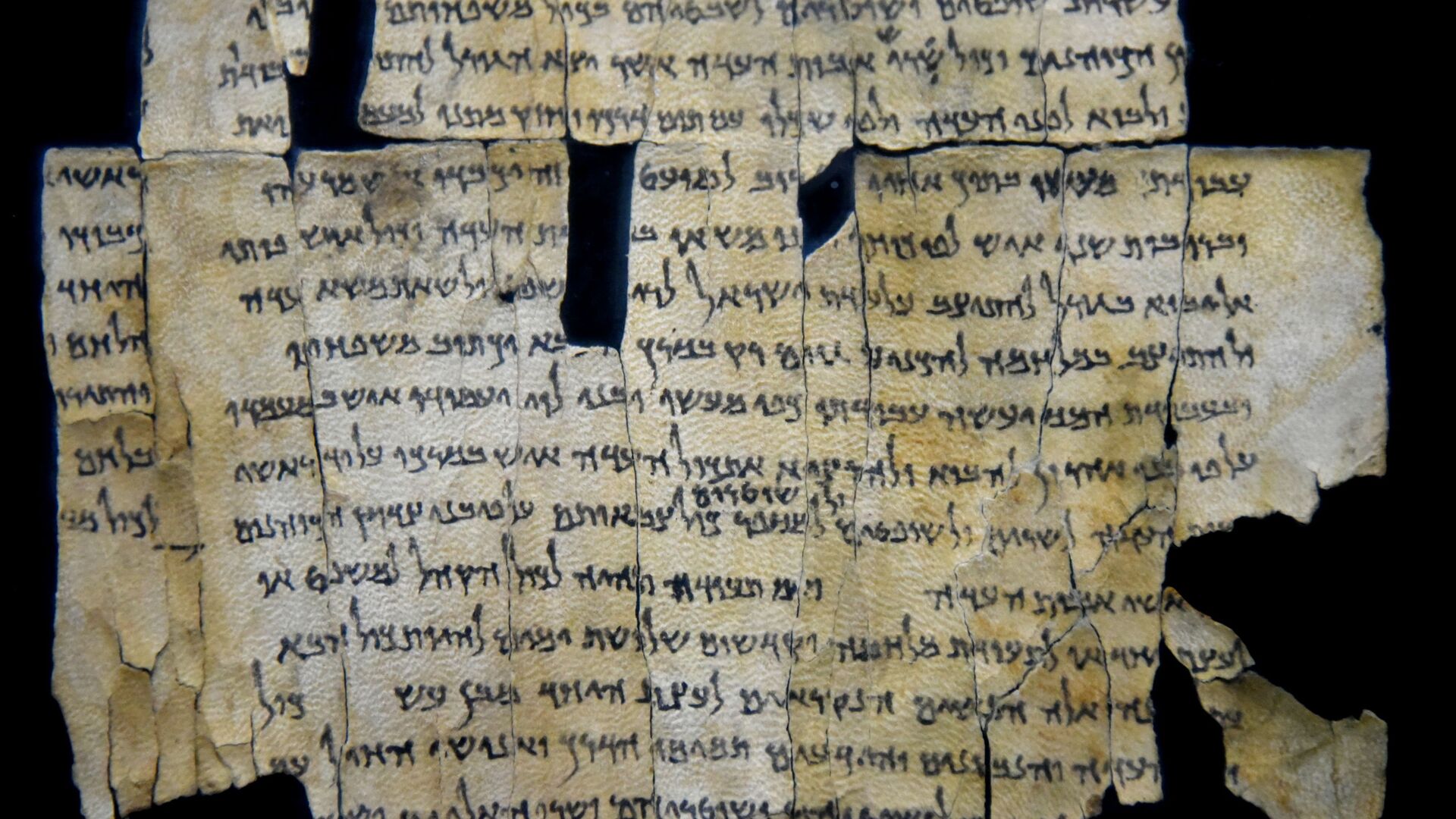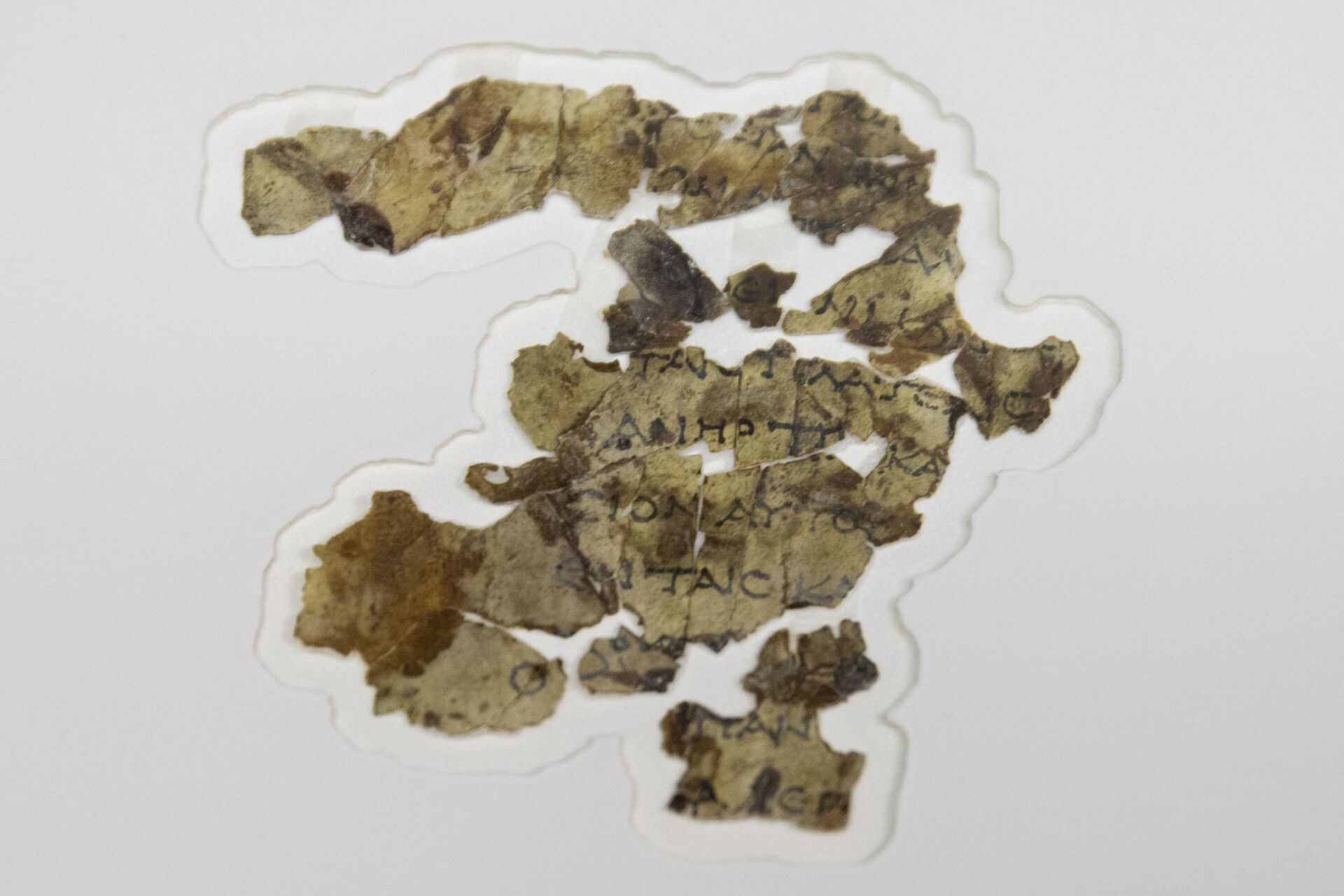Ancient Text Shedding Light on Mystical Jewish Sect May Solve Enigma of Qumran’s Dead Sea Scrolls

© Osama Shukir Muhammed Amin
Subscribe
Scholars studying the Dead Sea Scrolls have been unable to explain why over 15,000 pieces of the more than 900 original ancient documents were concealed in caves near Qumran, in the Judean Desert in Israel, so far from any major settlements.
An ancient Hebrew document dating back over 1,000 years may help scholars unravel a mystery linked to the Dead Sea Scrolls found in caves around Qumran, according to researchers at Ben-Gurion University of the Negev.

The Israel Antiquities Authority displays newly discovered Dead Sea Scroll fragments at the Dead Sea scrolls conservation lab in Jerusalem, Tuesday, March 16, 2021
© AP Photo / Sebastian Scheiner
The Damascus Document or Damascus Covenant is a 10th-century document that forms part of the Cairo Geniza, a collection of thousands of ancient documents found in the 19th century in a storeroom adjoining Ben Ezra Jewish synagogue in Fustat, which became a neighborhood of the city of Cairo. The Hebrew text was dubbed Damascus Document due to the number of times it makes mention of the Syrian city.
Research by Dr. Daniel Vainstub from BGU's Dept. of Bible, Archaeology and the Ancient Near East sheds new light on the site of #Qumran, which has been firing the imagination of researchers and #archaeology buffs for 70 years. @nirhasson
— Ben-Gurion University of the Negev (@bengurionu) August 30, 2021
Read more >>> https://t.co/3Ai4egtEGP
As Vainstub and his team researched the document, they claim to have discovered that it shows Qumran, in the Judean Desert, west of the Dead Sea, in Israel, was the site of an annual ceremony known as the Covenant of Renewal. This was where an ancient, mystical Jewish sect known as the Essenes gathered from across Israel.
This offers archeologists a long-awaited possible answer to a puzzling question: why so many fragments of the mysterious Dead Sea Scrolls, around 15,000 pieces out of the over 900 original documents, were hidden in caves around Qumran, far from any large settlements.
“I argue that the Damascus Document contains the bylaw or rule that regulates the annual gathering. No one noticed this before me,” Daniel Vainstub was cited as saying by Live Science on 27 September.
"The countrywide gathering in Sivan [the third month of the Jewish calendar, which falls inMay or June] was a large and well-regulated event for which clear and detailed rules were established," Vainstub added. According to him this “fits the archaeological remains of the site". According to the researcher’s new theory, many of the Dead Sea Scrolls themselves could have been written by Essene communities and brought to Qumran at the time of the annual festival “to study and be stored there.”
A passage in the Damascus Document is quoted as saying:
“And all [the inhabitants] of the camps shall assemble in the third month and curse anyone who deviates either to the right [or to the left from the] Torah.”
Vainstub believes this explains the shape of the structures excavated at Qumran and why the discovered pantry was stocked with over a thousand pottery storage vessels and hundreds of bowls, plates and cups - enough to serve thousands of pilgrims.
“some dozens of permanent residents of Qumran… had to host many hundreds of people at the site once a year in ever-increasing numbers,” said the researcher.
There is also a spacious open-air terrace in Qumran known as the “southern esplanade.” According to the new theory, it may have served as an outdoor eating area. The theory argues that the scrolls may have been brought to the caves from all over the country and left there over the decades.
Today, we take a glance at the Dead Sea Scrolls, a set of manuscripts that outline a large swath of the Hebrew bible.https://t.co/uMLOPywEwE pic.twitter.com/3BhYbgtqWE
— AspectHistory - Mythology & History (@aspecthistory) September 26, 2021
The Dead Sea Scrolls, among the most important archaeological findings in modern times, are a library of theological and legal writings from the third century BCE to the first century CE.
Today marks the 30th anniversary of the Dead Sea Scrolls being made publicly available for the 1st time. Therefore why not check out our special issue on the Dead Sea Scrolls from 2002.https://t.co/ZL1VHD9m2d @WileyHumanities #religioushistory pic.twitter.com/DsDEBG9iHM
— The Journal of Religious History (@Journal_RH) September 22, 2021
They were discovered from 1947 through the 1960s, largely in 11 caves surrounding the ancient site of Qumran.



